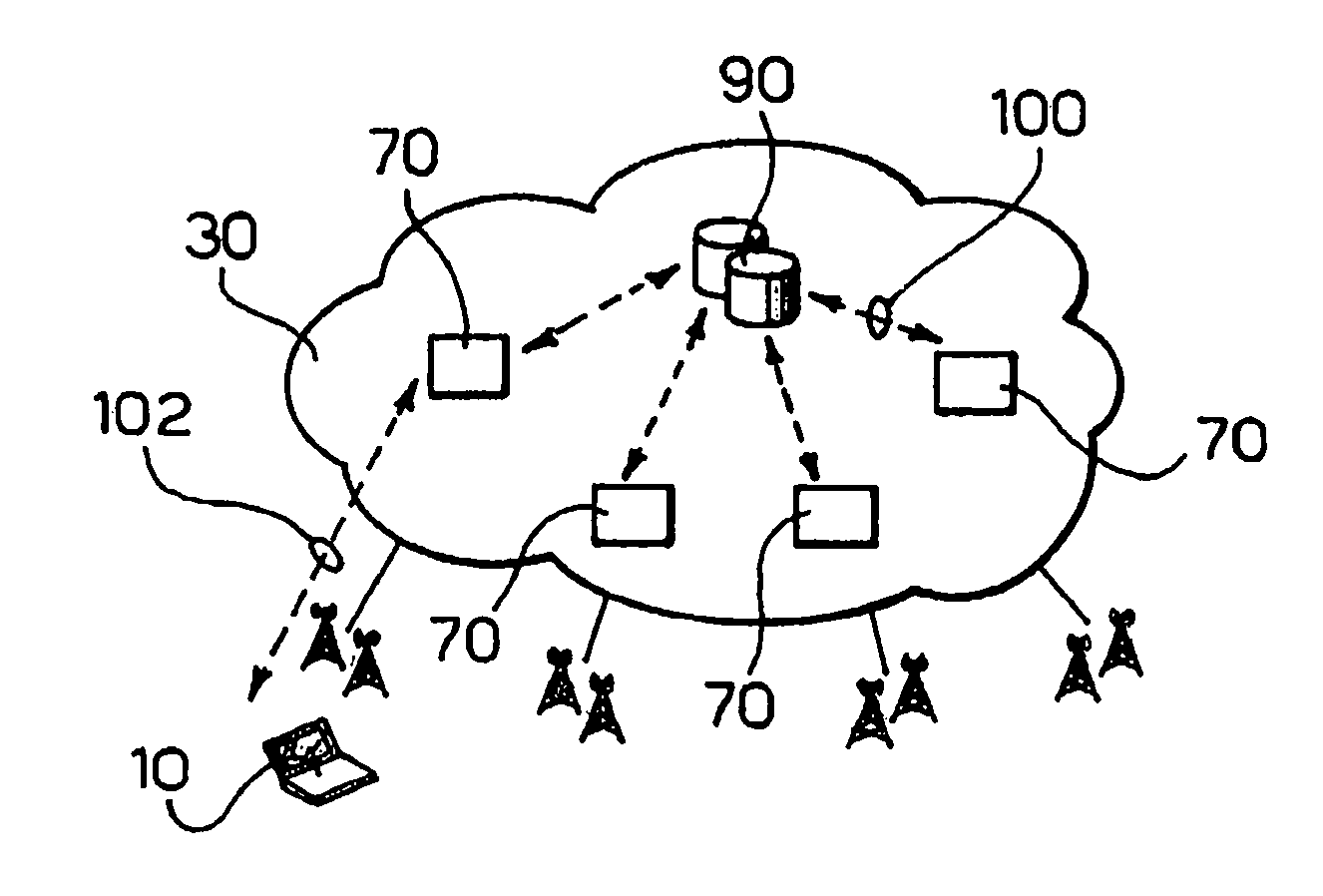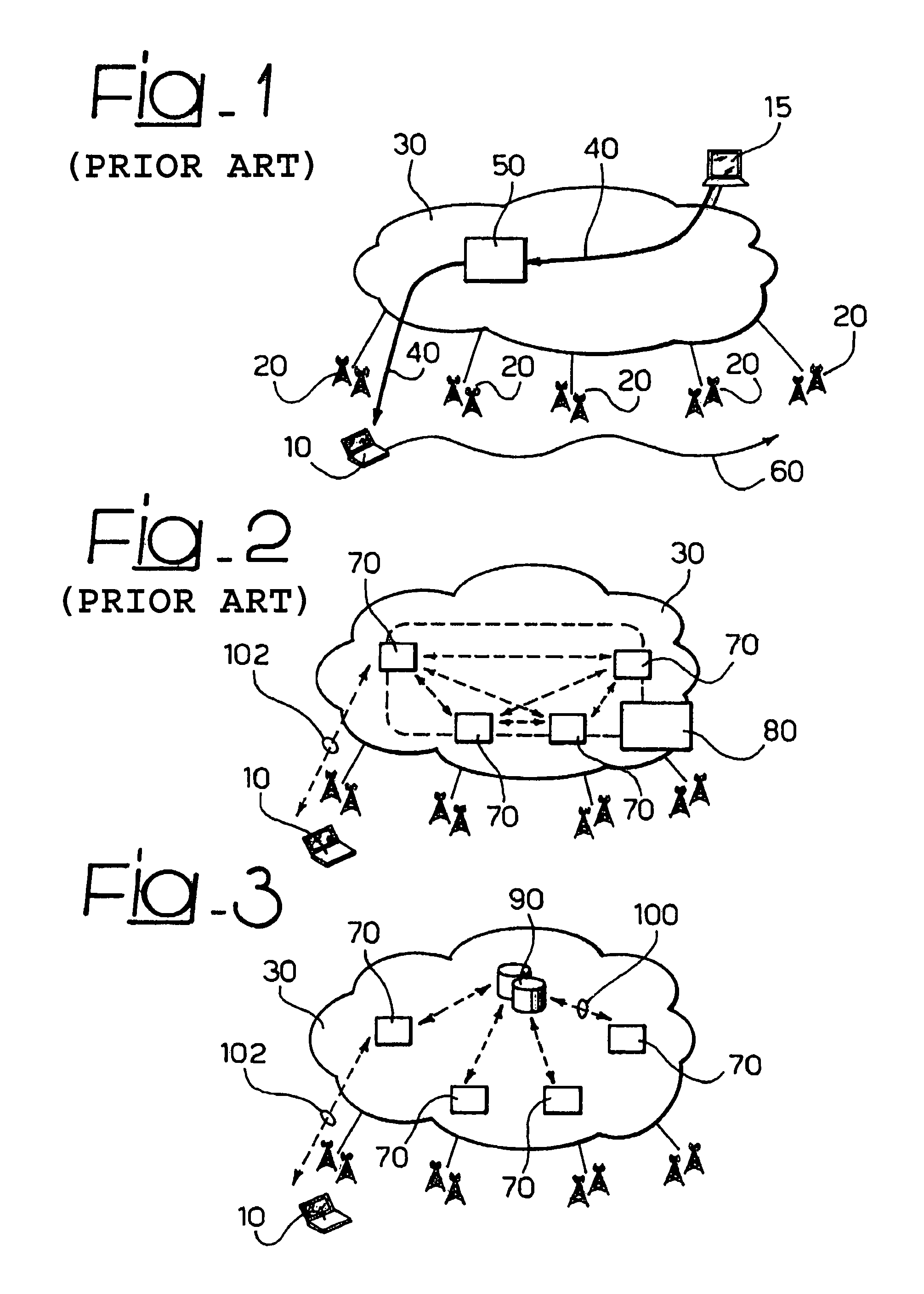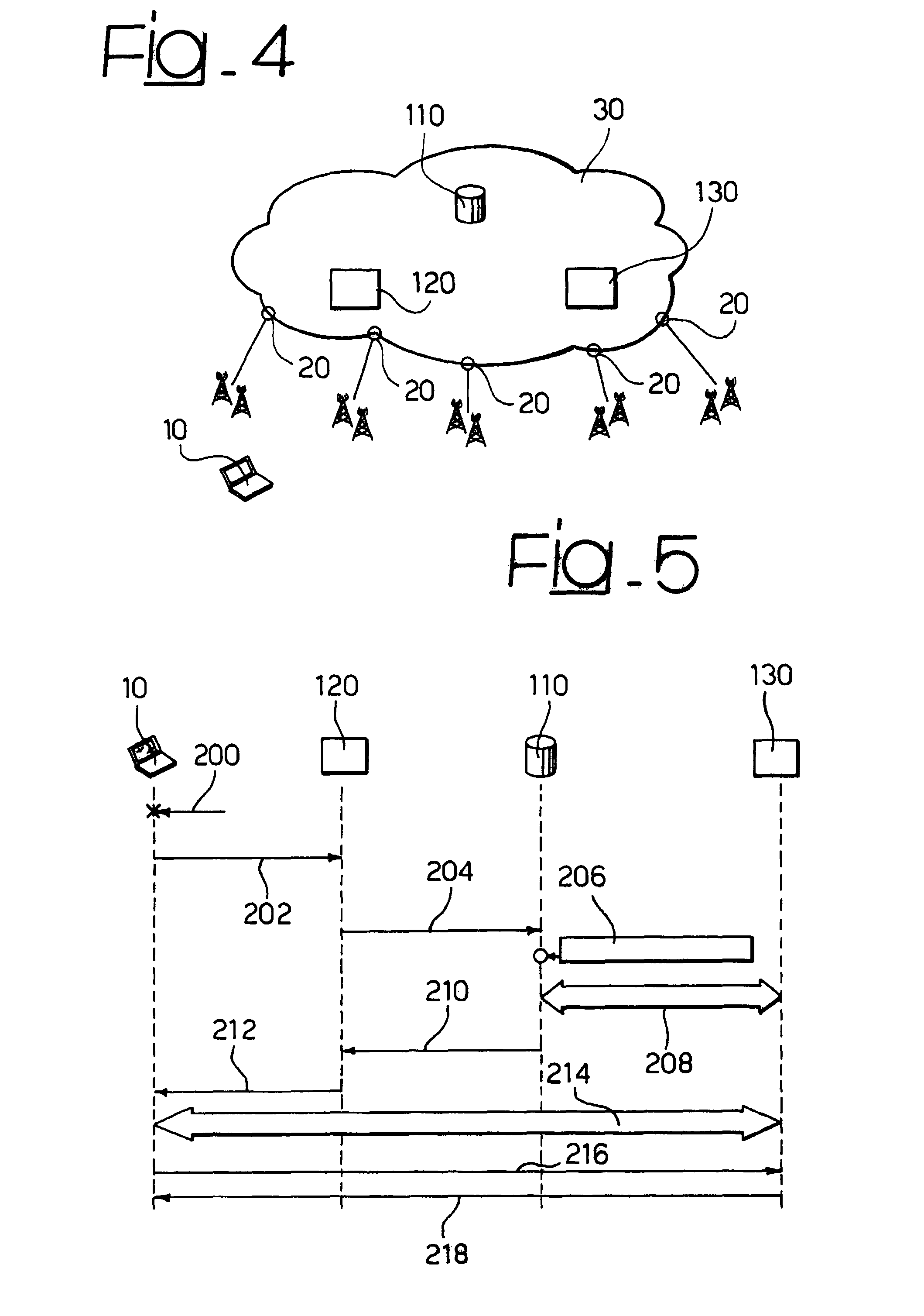Method and system for controlling mobility in a communication network, related network and computer program product therefor
a communication network and mobility control technology, applied in the field of methods, can solve the problems of not being able to provide adequate quality services, not being able to manage ip terminals moving inside the network, and being unable to provide ip networks. the effect of traffic reduction
- Summary
- Abstract
- Description
- Claims
- Application Information
AI Technical Summary
Benefits of technology
Problems solved by technology
Method used
Image
Examples
Embodiment Construction
[0061]FIG. 3 shows with direct reference to the diagrams already shown in FIGS. 1 and 2 an example of network architecture on which the herein-described arrangement is based.
[0062]The architecture in FIG. 3 provides for the use of the Authentication, Authorisation and Accounting (AAA) platform 90 of the provider with which the user subscribed the service. This in order to make such platform, already normally present in the provider 30 network, authorise, drive and monitor the whole migration process towards a new Home Agent (Designated Home Agent), by sending configuration commands and information to the Home Agents 70, present in the network, and to the mobile node 10. Communication between Authentication, Authorisation and Accounting (AAA) platform 90 and mobile node 10 is performed with the support of the Home Agent that is currently serving the mobile node (namely the Serving Home Agent) through suitable extensions in the AAA protocol, designated with 100 in FIG. 3, and in Mobil...
PUM
 Login to View More
Login to View More Abstract
Description
Claims
Application Information
 Login to View More
Login to View More - R&D
- Intellectual Property
- Life Sciences
- Materials
- Tech Scout
- Unparalleled Data Quality
- Higher Quality Content
- 60% Fewer Hallucinations
Browse by: Latest US Patents, China's latest patents, Technical Efficacy Thesaurus, Application Domain, Technology Topic, Popular Technical Reports.
© 2025 PatSnap. All rights reserved.Legal|Privacy policy|Modern Slavery Act Transparency Statement|Sitemap|About US| Contact US: help@patsnap.com



